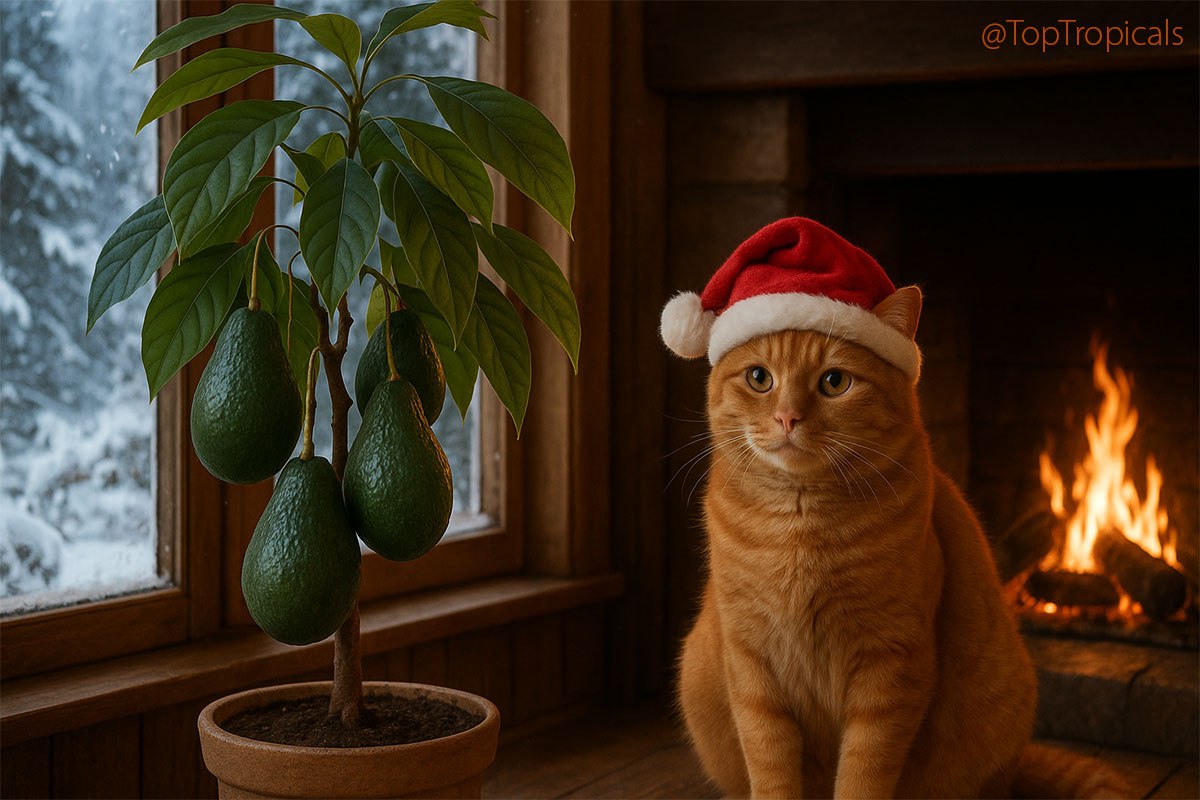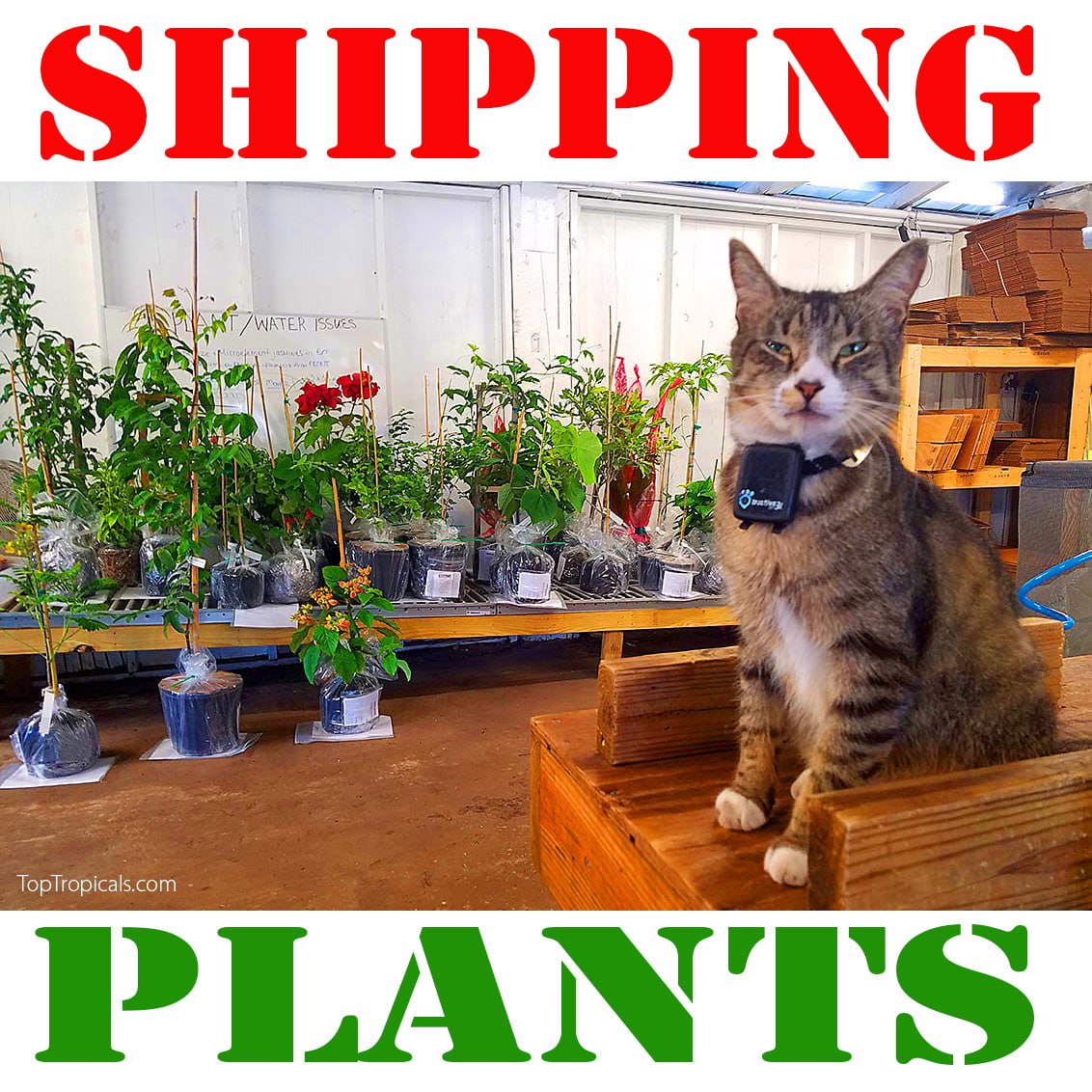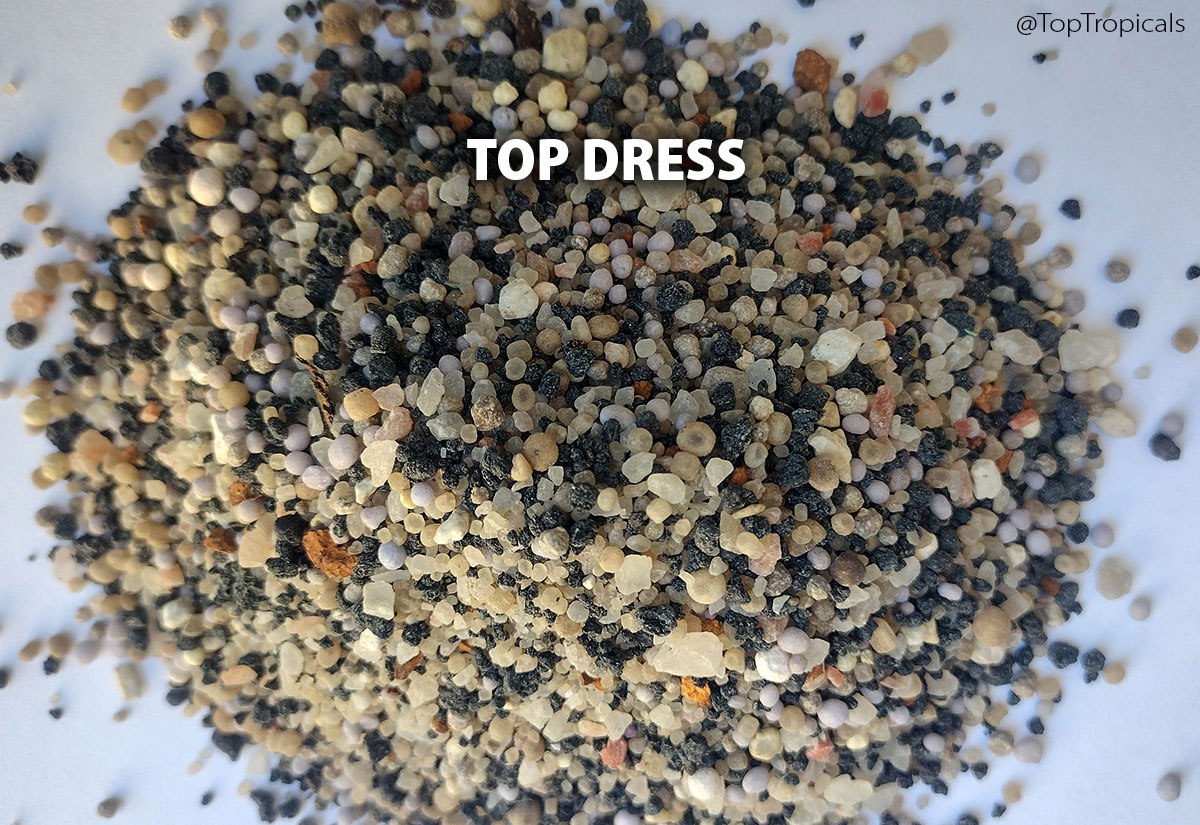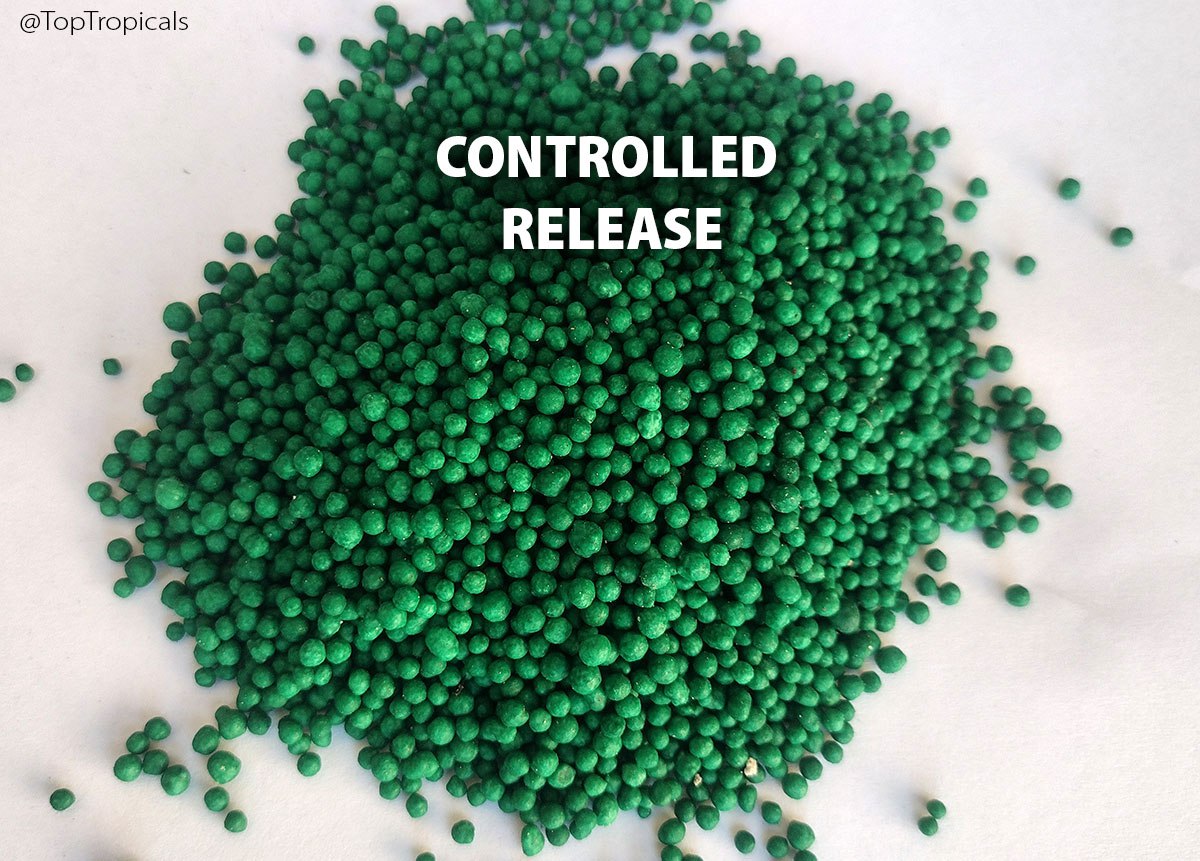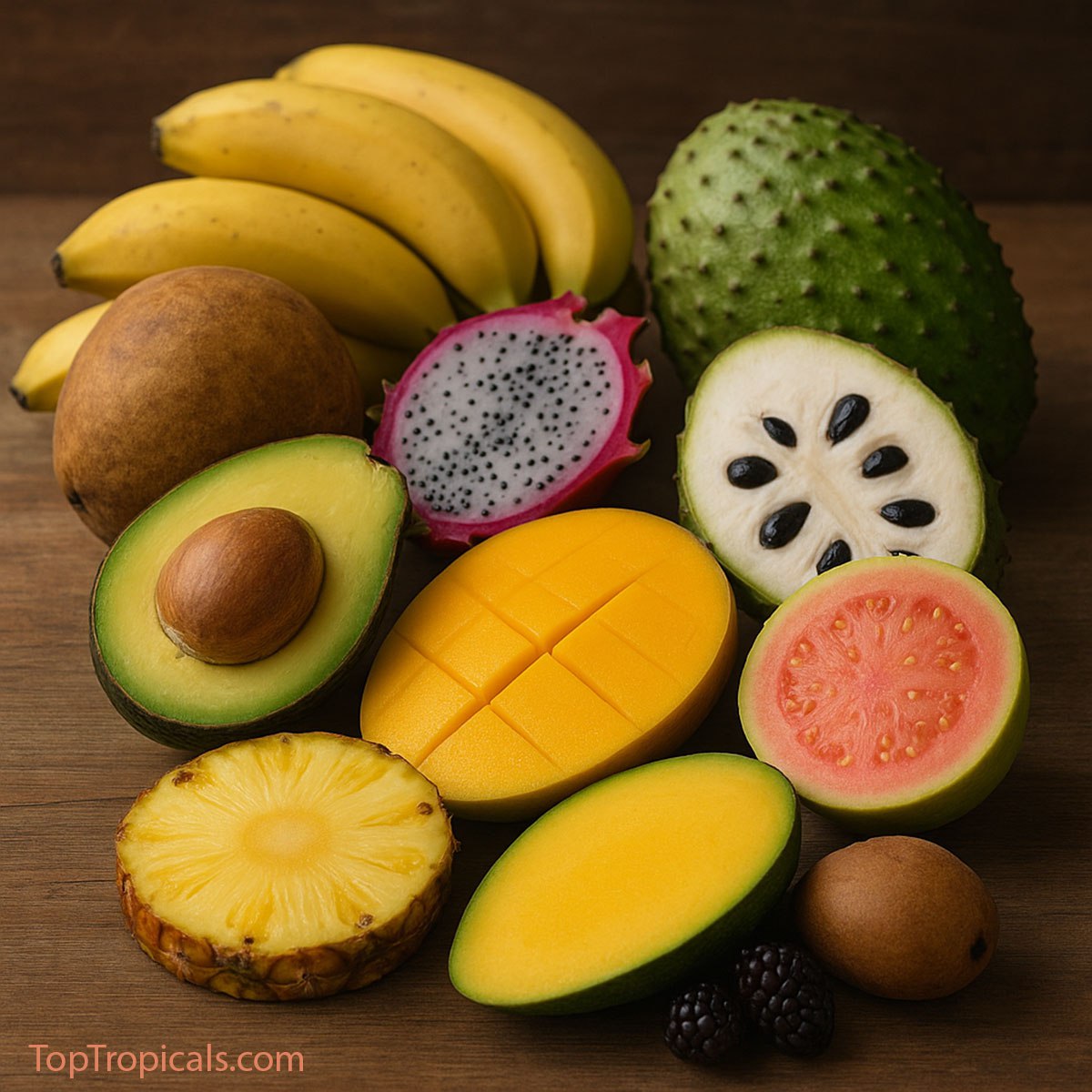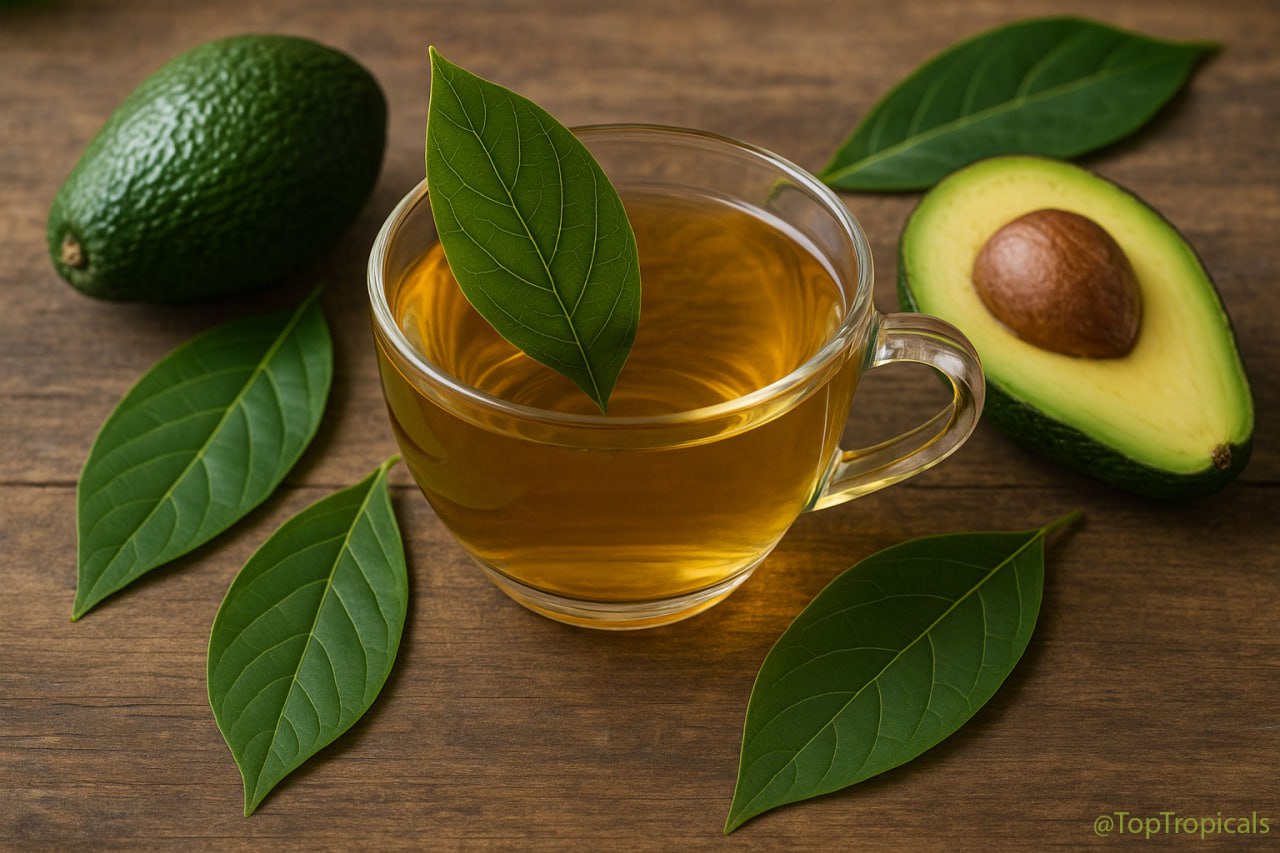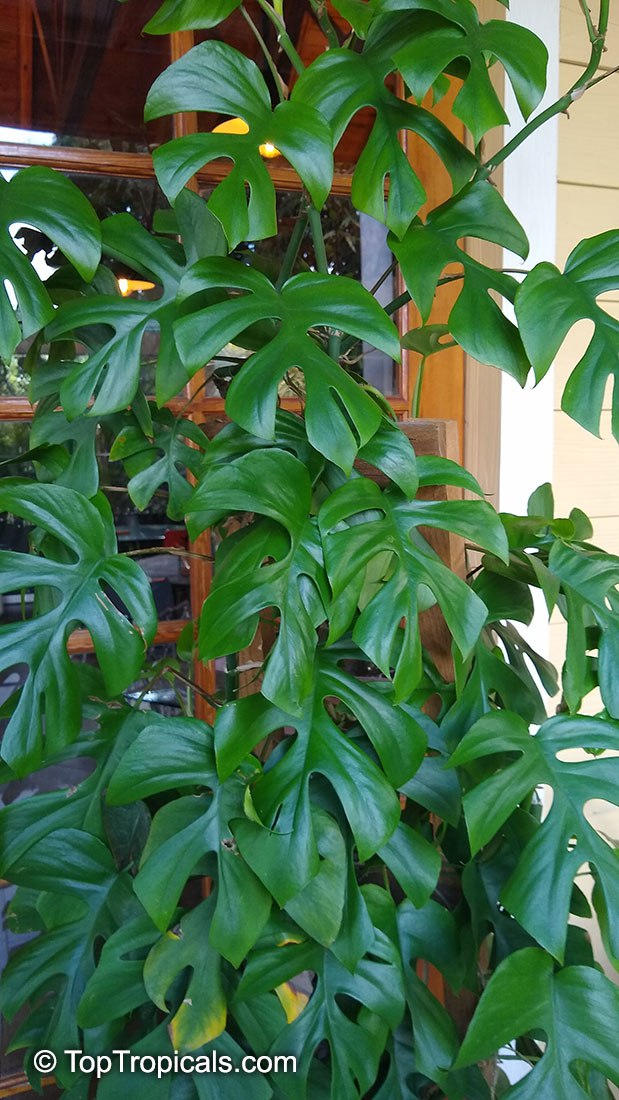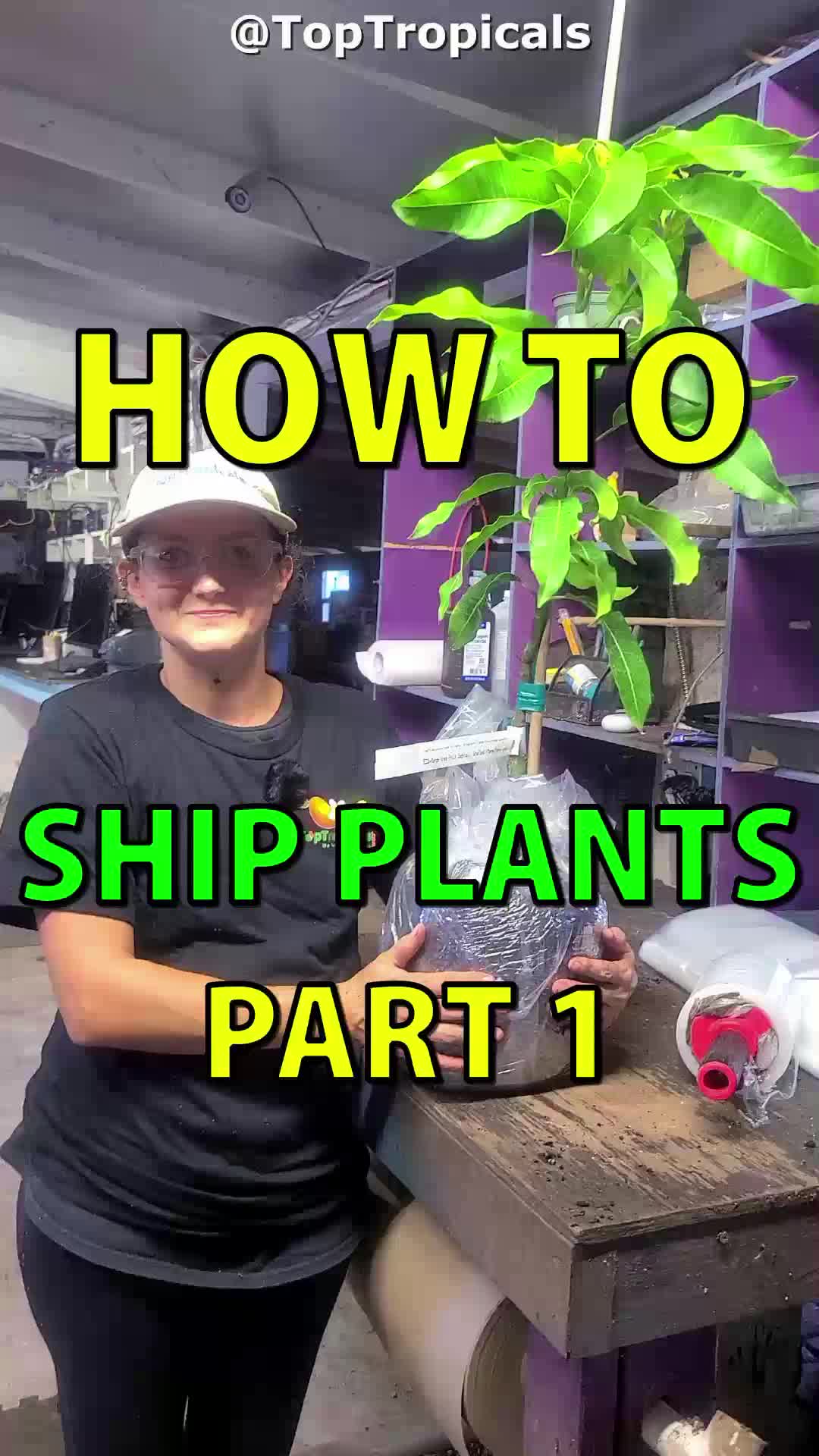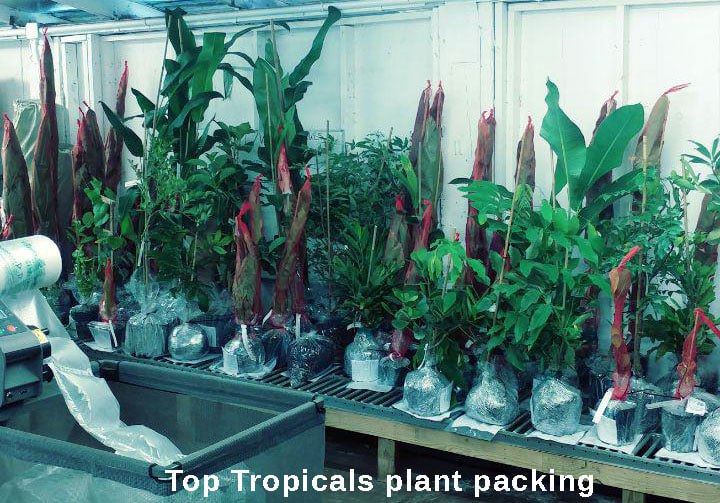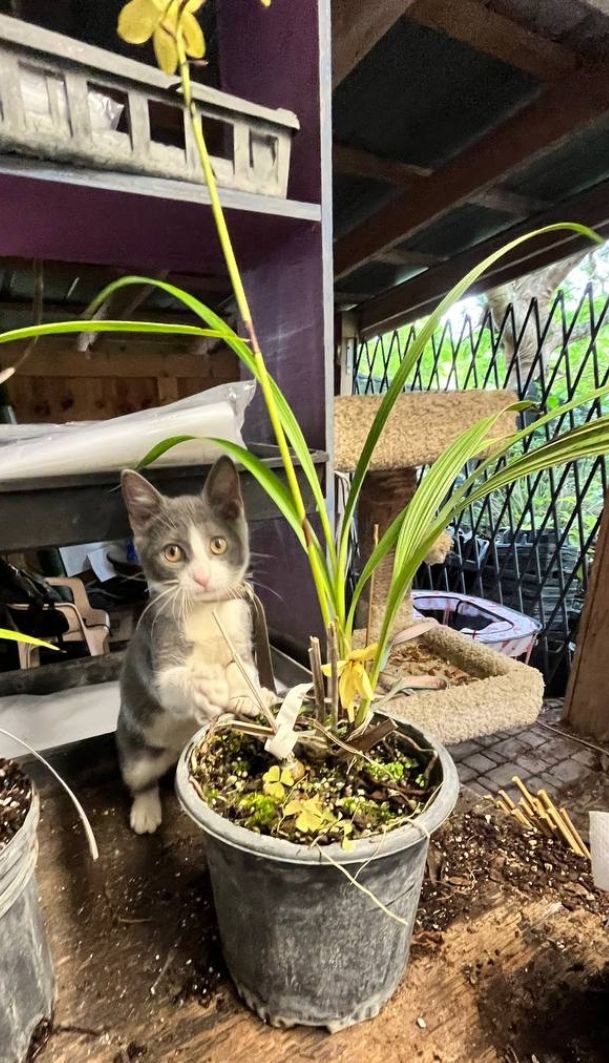Garden Blog - Top Tropicals
How to protect Avocado from cold and how hardy is it?
❄️ How to protect Avocado from cold and how hardy is it?
Growing Avocado trees in cooler regions is possible with the right variety and care. By choosing Cold Hardy types and protecting them during cold spells, you can successfully grow avocados outside tropical climates. The more mature your tree, the better it handles the cold.
❄️ Protection for young plants
With a little planning and protection, you can enjoy fresh avocados even in cooler climates!
✔️ Check outAvocado Variety Guide interactive chart. Sort them by flower type A or B, tree habit, fruit shape and quality, cold hardiness, origin, season and more!
🛒 Shop Cold Hardy Avocados
📖 Our Book: Avocado Variety Guide, Snack or Guacamole?
📚Learn more:
#Food_Forest #Avocado #How_to
🟢 Join 👉 TopTropicals
Growing Avocado trees in cooler regions is possible with the right variety and care. By choosing Cold Hardy types and protecting them during cold spells, you can successfully grow avocados outside tropical climates. The more mature your tree, the better it handles the cold.
- ❄️ What is Avocado cold hardiness?
Most Avocados are sensitive to frost, but some Mexican varieties can survive lows around 15°F once established, and brief dips near 10°F with good care.
- 👉 Cold tolerance depends on:
- ✦ Duration of cold: Short freezes are easier to survive.
- ✦ Sun exposure: More sun means better cold resistance.
- ✦ Wind protection: Wind can do more harm than temperature alone.
- ✦ Tree health: Regular fertilization, such as Sunshine Boosters, helps strengthen plants.
- ❄️ How to protect avocados from cold
- ✦ Bigger is better: Mature trees resist cold better than young ones.
- ✦ Wind protection: Plant on the south or southeast side of a building for warmth.
- ✦ Good fertilization: Healthy trees are stronger and more resilient.
- ✦ Watering: Water less in winter; overwatering in cold weather can cause root rot.
❄️ Protection for young plants
- ✦ Cover and mulch: Before a freeze, mound mulch around the base and cover with a blanket. Add Christmas lights or a small heater for extra warmth (use caution).
- ✦ Use microclimates: Plant near walls or buildings where it’s warmer and wind is reduced.
With a little planning and protection, you can enjoy fresh avocados even in cooler climates!
✔️ Check outAvocado Variety Guide interactive chart. Sort them by flower type A or B, tree habit, fruit shape and quality, cold hardiness, origin, season and more!
🛒 Shop Cold Hardy Avocados
📖 Our Book: Avocado Variety Guide, Snack or Guacamole?
- ·
📚Learn more:
- · Can I Grow Avocado Outside the Tropics?
- · Avocado Variety Guide
- · How to grow cold-hardy avocados and how cold-hardy are they?
- · Avocado that laughs at frost: Mexicola Grande for cooler climates
- · Cold hardy Avocado Joey: you can eat with the skin
- · Posts about #Avocado
#Food_Forest #Avocado #How_to
🟢 Join 👉 TopTropicals
How we ship plants: quick guide
🚚 How we ship plants: quick guide
If you’re a first-time mail order plant buyer, or just want peace of mind before sending a live plant on its journey in a box, check out these videos. And if you have questions, feel free to ask - we’ll be happy to answer them all!
Rest assured, your plants are in good hands!
🛒 Shop plants online
📚 Learn more:
#How_to
🟢 Join 👉 TopTropicals
If you’re a first-time mail order plant buyer, or just want peace of mind before sending a live plant on its journey in a box, check out these videos. And if you have questions, feel free to ask - we’ll be happy to answer them all!
Rest assured, your plants are in good hands!
- 📱 How do we ship plants? Part 1: prepare the plant
- 📱 How do we ship plants? Part 2: packing in the box
- 📱 How do we ship plants, Part 3: it's Christmas - unwrapping is fun?
🛒 Shop plants online
📚 Learn more:
#How_to
🟢 Join 👉 TopTropicals
Which dry fertilizer to use - slow release or controlled release?
🌳 Which dry fertilizer to use - slow release or controlled release?
❓ Q: You offer two kinds of dry fertilizers - Slow Release Trop Dress and Controlled Release Green Magic. What is the difference, and which one should I use? I used your water-diluted Sunshine Boosters with every watering, but now that I’ll be away for a few months, I just want to give my garden a long-lasting fertilizer.
Green Magic ideal for potted fruit trees, ornamentals, and houseplants. One handful keeps your plants fed for half a year. We use it for all container plants when potting up or refreshing soil every six months. It can also be used for in-ground plants if you want the best, most consistent results. Green Magic: try it out! (Sample here)
🛒 Shop Plant Food & More
📚 Learn more:
#Fertilizers #How_to
🟢 Join 👉 TopTropicals
❓ Q: You offer two kinds of dry fertilizers - Slow Release Trop Dress and Controlled Release Green Magic. What is the difference, and which one should I use? I used your water-diluted Sunshine Boosters with every watering, but now that I’ll be away for a few months, I just want to give my garden a long-lasting fertilizer.
- ✔️ A: Top Dress Slow Release Fertilizer is used for quick greening-up. Although it’s called “slow release,” the nutrients become available fairly fast. It contains soluble nitrogen (N), phosphorus (P), and potassium (K) that dissolve with rain or irrigation, acting within a week or a few weeks depending on temperature and rainfall. It’s great for giving your plants a quick boost of “fast food.”
- ✔️ Green Magic Controlled Release Fertilizer is a true long-term, controlled-release fertilizer. Thanks to its PolyOn Technology coating, it provides steady, consistent feeding for 5-6 months. Unlike regular dry fertilizers that dump all nutrients at once, Green Magic releases them gradually - no burn, no guesswork, just steady nutrition.
We use Top Dress mainly for in-ground plants. It can be used in pots only during warm weather and active growth, but not in cooler months, as it may burn roots. Since we introduced Green Magic, we mostly use Top Dress only for garden beds and landscapes.
Green Magic ideal for potted fruit trees, ornamentals, and houseplants. One handful keeps your plants fed for half a year. We use it for all container plants when potting up or refreshing soil every six months. It can also be used for in-ground plants if you want the best, most consistent results. Green Magic: try it out! (Sample here)
🛒 Shop Plant Food & More
📚 Learn more:
- ▫️Green Magic effect: before and after
- ▫️The SECRET growers never tell you: simple trick how to bring plants back to life and keep green
- ▫️Give your plants their magic treat
- ▫️How to make plants green quickly: Green Magic - the fertilizer that truly works like magic!
- ▫️How to to make leaves green
- ▫️What Fertilizer to Use Now and How? Part 1, Part 2, Part 3
- ▫️Why my plant turned yellow and why plants need Micronutrients?
- ▫️Why Should I Use Sunshine Boosters
- ▫️Why is my palm tree turning yellow?
- ▫️Which fertilizer to use: Organic or Inorganic?
- ▫️How to make plants green
- ▫️The Truth about fertilizers
#Fertilizers #How_to
🟢 Join 👉 TopTropicals
Cassia vs Bauhinia: which is better as an everblooming container tree?
Cassia vs Bauhinia: which is better as an everblooming container tree?
🌈 Cassia vs Bauhinia: which is better as an everblooming container tree?
🛒 Explore Cassia trees and Bauhinias (Orchid Trees)
📚 Learn more:
#Container_Garden #Trees #How_to
🟢 Join 👉 TopTropicals
- 🌸 Cassia (Senna) trees are very popular flowering trees - fast growing, free-flowering, relatively cold hardy, and they love the summer heat. Cassias come in several colors: yellow, orange, pink, red, and rainbow. Rainbow varieties (which are hybrids between yellow and pink cassias) are the most popular thanks to their multicolor blooms with swirls of yellow, pink, red, and orange. But while Rainbow Cassia is a spectacular flowering tree for southern gardens, is it a good choice for a container when you want color on your patio or pool deck?
- 🌸 Some yellow-flowering cassias make attractive bushes that bloom most of the year and stay compact, so they can be grown as container specimens:
- 🌸 When it comes to Rainbow or pink cassias such as Cassia javanica - Apple Blossom Tree or Cassia grandis- Red Cassia and other species and hybrids (Cassia marginata - Rainbow Shower Tree, Cassia roxburghii - Ceylon Senna, Cassia x nodosa - Pink Shower), these are usually more vigorous trees that may take several years to bloom. Their flowering season lasts from a few weeks to a couple of months. These trees grow moderately fast but typically need to reach about 10 feet before they start flowering.
- 🌸 So, the answer is: if you want rich, deep color year-round from a container tree, go with Bauhinias - Orchid Trees. Most varieties grow well in pots, stay compact, and reach blooming maturity within just one season. The following varieties are everblooming and can produce flowers for up to 10 months of the year:
Cassia didymobotrya- Popcorn Cassia
Senna alata - Empress Candles
Cassia fistula - Golden Shower (a compact size winter blooming tree)
- ▫️Bauhinia madagascariensis - Red Dwarf Orchid Tree. Blooms from winter through fall, up to 10 months a year. The most cold-hardy of all.
- ▫️Bauhinia blakeana - Hong Kong Orchid Tree. A large tree in the ground, but compact in pots if trimmed. Grafted trees flower right away. Winter bloomer, cold hardy to light frost.
- ▫️Bauhinia tomentosa - Yellow Orchid Tree. Flowers from Winter through Summer, cold hardy to light frost.
- ▫️Bauhiniamonandra - Napoleon's Plume Orchid Tree. Almost everblooming with the longest flowering period (less cold hardy than the first three).
- ▫️Bauhinia acuminata - Dwarf White Orchid Tree. Blooms from summer through winter (also less cold hardy than the first three).
🛒 Explore Cassia trees and Bauhinias (Orchid Trees)
📚 Learn more:
- ✦ How to add color to your yard with Cassias
- ✦ Rainbow Cassias and Why they are called "Rainbow"
- ✦ Napoleons Plume - Orchid Tree that blooms in a pot
- ✦ Bauhinia madagascariensis, or Red Butterfly Orchid Tree that NEVER Stops Blooming
- ✦ Rare Red Orchid Tree you may never find again but everyone wants
- ✦ Bauhinia acuminata, Dwarf Orchid tree - white and elegant
- ✦ 5 small tropical trees that bloom all summer or year around
- ✦ How to grow Orchid Trees in pots
#Container_Garden #Trees #How_to
🟢 Join 👉 TopTropicals
11 tropical fruits to eat instead of taking a fiber supplement
🍑 11 tropical fruits to eat instead of taking a fiber supplement
These fruits aren’t just delicious - they help you meet your daily fiber needs in ways that are far more enjoyable (and sustainable) than taking supplements. And when home gardeners, farmers, or tropical communities grow and share them, it’s a double win: nutrition and tradition hand in hand.
✔️ Tropical fiber power: tips for getting more fiber from tropical fruits
🛒 Plant a fruit tree to harvest your fruit tomorrow
📚 Learn more:
Tropical fruit health benefits guide - what fruit and edibles can help with health issues and vitamin deficiencies, Part 1 and Part 2.
#Food_Forest #Remedies #Discover #How_to
🟢 Join 👉 TopTropicals
- When we think of tropical fruit, we picture sweetness, sunshine, and exotic flavors packed with vitamin C. But beneath all that juicy goodness lies another gift: dietary fiber - quietly working to support digestion, feed the gut microbiome, and help keep blood sugar steady.
- Avocado leads the pack among tropical fruits for fiber content. One creamy, ripe fruit can provide around 10 grams of fiber, roughly a third of an adult’s daily need. And there’s more to avocado than fiber - it’s also rich in healthy fats, micronutrients, and that silky texture everyone loves.
- Other tropical fruits bring their own kind of fiber strength. Guava delivers up to 9 grams per cup, plus a burst of vitamin C.
- Mango offers about 3 grams in half a fruit, especially when eaten with some of the skin.
- Pineapple, though not always seen as a fiber powerhouse, still contributes around 2 grams per cup, along with bromelain, the enzyme that helps digestion.
- Jackfruit’s fibrous pulp makes it another standout - it’s so meaty, it’s even used as a plant-based substitute in savory dishes.
- Sapote fruit (Mamey, Canistel) and Sapodilla add fiber with a smooth, custard-like texture.
- Adventurous tropical varieties like Annona (custard apple, soursop) may not top the charts in fiber numbers, but their soft, fibrous flesh still adds value: about 1.3 grams of fiber per 100 grams of fruit.
- Bananas contain both soluble and insoluble fiber; the soluble part (mainly pectin) helps control blood sugar and appetite, while the insoluble fiber aids regularity.
- Mulberries are rich in insoluble fiber, especially in their skin, supporting digestion and promoting healthy bowel movements.
- Dragon fruit offers a mix of soluble fiber in its juicy flesh and insoluble fiber from its tiny edible seeds, which help support gut health and feed good bacteria.
These fruits aren’t just delicious - they help you meet your daily fiber needs in ways that are far more enjoyable (and sustainable) than taking supplements. And when home gardeners, farmers, or tropical communities grow and share them, it’s a double win: nutrition and tradition hand in hand.
✔️ Tropical fiber power: tips for getting more fiber from tropical fruits
- ⏺Eat whole, not juiced. Most of the fiber is in the pulp, skin, and seeds. Juicing removes much of that goodness.
- ⏺Mix it up. Tropical fruits are great, but balance them with legumes, whole grains, nuts, and veggies for a full fiber range.
- ⏺Take it slow. If your diet is low in fiber, increase gradually to avoid bloating or discomfort.
- ⏺Drink plenty of water. Fiber works best when paired with hydration.
- ⏺Mind the ripeness. Unripe fruits can have more resistant starch, another form of fiber.
- ⏺Get creative. Toss tropical fruits into smoothies, salsas, breakfast bowls, or even desserts - a tasty stealth-fiber strategy.
🛒 Plant a fruit tree to harvest your fruit tomorrow
📚 Learn more:
Tropical fruit health benefits guide - what fruit and edibles can help with health issues and vitamin deficiencies, Part 1 and Part 2.
#Food_Forest #Remedies #Discover #How_to
🟢 Join 👉 TopTropicals
